UNESCO World Heritage Sites – Galapagos Islands
There are several reasons the majority of our travels involve visiting UNESCO World Heritage Sites. The reasons are:
- Brunette not only does the trip research but she’s a small walking, talking human version of Wikipedia and her content knowledge of UNESCO World Heritage sites is astounding and more than a little odd.
- UNESCO World Heritage sites, particularly the ones in nature, tend to not be filled with the same people who fly halfway around the world to go to casinos and shopping malls.
- The sites have to be well maintained to stay listed so they aren’t full of Starbucks, litter or, generally, flagrant smokers.
- Oh, and they’re interesting, probably even unique, often beautiful and are great places to take pictures you can later use to bore your friends and family.
To get on the UNESCO World Heritage Site list very specific criteria have to be met. Sites are selected on the basis of one (or more) of the six cultural and four natural criteria. The Galapagos would qualify for several of the criteria but we picked two that we are betting on:
- outstanding examples representing significant on-going ecological and biological processes in the evolution and development of terrestrial, fresh water, coastal and marine ecosystems and communities of plants and animals;
- contain the most important and significant natural habitats for in-situ conservation of biological diversity, including those containing threatened species of outstanding universal value from the point of view of science or conservation.
For many years Blonde and Brunette wanted to go to the Galapagos Islands. We were mostly interested because going there required being on a small ship (no big cruises ships with Kathie Lee Giffords belting out “Tie a Yellow Ribbon” or other hits of yore) and it also involved snorkeling with creatures who had not previously had the opportunity to snorkel with us. And, because the islands in their entirety are a UNESCO World Heritage site, access is very limited. You can only go on shore with certified, highly knowledgeable guides who explain the history of the islands, the flora and the fauna and, fortunately, have enough humor that you don’t feel as if you’re in some endless science lecture.
Getting there from the U.S. is neither simple nor inexpensive so Brunette did her research to ensure that we would go at the best time of year for snorkeling. The Galapagos are at the confluence of three ocean currents in the chilly Pacific and if you want to snorkel then you want to go when the warm current is prevailing. We went in April and could not have had more perfect weather conditions.
Blonde did her share of the research which was to ask a friend to ask a friend who had gone there what tour company he had used. Based on the fact that the person was a gay man with a lot of money, smarts and sense of adventure we figured there could not be a better source. He recommended Myths and Mountains and we booked with them and they were excellent.
The “not inexpensive” part of the trip was taken care of in a manner the more sentimental among you may find to be shocking but we’re practical and not at all sentimental. Our mother had died and we (meaning Brunette) needed to sell her car. It was a basic model Hyundai that car collectors in rural western Pennsylvania were not lining up in droves to buy. We chose to see that car in a new light – it was going to be the Galapagos -Mobile!
Brunette was now highly motivated to wring as much as possible out of the sale of the car. We told ourselves that our Mother who instilled our love of travel, animals and water (as well as all kinds of weird issues) in us would approve. Or she wouldn’t, but her time to vote had ended.
Brunette should have been a used car salesman (ignoring the gender transformation issues this would entail) because no one ever got so much money for so little car before. And we were off!
Oh wait, just realized that this is supposed to be about UNESCO World Heritage sites so back to that. The Galapagos, (for those of you were home-schooled and taught “intelligent design” and not evolution) are where Charles Darwin (a seriously odd dude) showed up in his ship The Beagle back in 1835 and developed the beginnings of his massively controversial theory of evolution by natural selection. (Brunette’s husband is an example of how this is not a perfect system but it’s still pretty persuasive.)
Why did Darwin come up with his theory in the Galapagos and not, for example, on St. Thomas? Maybe he also sought to avoid the casinos and cigarettes crowd. More likely it was because the 19 islands of the Galapagos are so isolated, near that confluence of currents (love getting to use that word twice!) and have had a very long history of seismic and volcanic activity.
So what are some of the unique species Darwin first documented that still exist only on the Galapagos?
Due to our immaturity we will start with one with the funniest name: The Blue Footed Boobie.
The name is a bit inaccurate as the bird’s feet, not its boobies, are blue. When a male Boobie decides to go get himself a honey he does a hilarious dance where he raises his feet up and down and looks way more awkward than even the most drunken, uncoordinated white guy at a wedding. But his dance steps aren’t the point – he wants to show off how blue his feet are as that’s apparently a major selection criteria for the ladies.
This is a great video of the mating dances and rituals. You will learn that boobies are adulterous which isn’t surprising given their name.
Blue Footed Boobies also have an amusing way of getting food. They plunge-dive dramatically, suicidally to the casual observer, into very shallow water to get their fish. This may to be ensure they’re in and out before their feet get any of that mate-attracting blue washed out of them.
Another bird who is also out there in the dating scene and has his own competitive differentiator is the red-throated Frigatebird. He doesn’t have cool feet but he does have a big red pouch on this throat and he knows damn well that size matters. So he goes around puffing out his pouch to get himself a lady. (Won’t be long before Kim Kardashian marries one.)
Two things in our notes from the trip are that there are two species of Frigatebirds in the Galapagos; Magnificent and Greater. Clearly these guys named themselves. Also the bird was supposedly named a Frigatebird because it steals its food from other birds in mid-air which is analogous (to someone) to pirates on frigates stealing from other ships at sea.
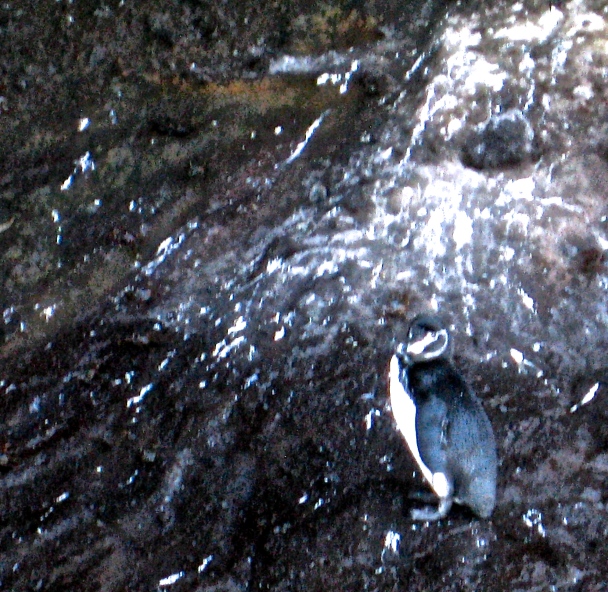
It’s hard to get a good picture of a tiny penguin from a moving boat when the penguin matches its surroundings so be glad we even got this lousy picture!
The Galapagos even have their own brand of penguin. Its claim to fame is that it’s very small and the only breed of penguin found north of the equator. These little cuties make their nests in the coastal lava cliffs. They can’t fly so they sometimes entertain themselves by mingling with very fortunate snorkelers.
One of the creepier things that is also unique to the Galapagos is the astoundingly unattractive marine iguana. You may not have noticed but if you think about it you have most likely seen lizards lounging around pools (sometimes in Speedos) but iguanas do not swim. That is except for the ones in the Galapagos.
They also spit out of the top of their heads. This fact was verified when Blonde walked up to a heap of them (seriously, they lay around in heaps) and said “I think they’re dead” and one spouted out an impressive stream of iguana spit in her direction. Apparently they also speak English and are real pranksters!
Going out to get something for dinner is a real hassle for the marine iguanas. They go onto the ocean for fish. Doesn’t sound so bad until you learn that, on their way back in, the sea lions want the same fish and kill the iguanas. A trip to the grocery store is a real high risk adventure for a marine iguana or Blonde when she’s hungry.
The Galapagos even have their own brand of sea lions, lizards and other species all of which we were fortunate enough to have seen.

Galapagos sea lion we saw when we were snorkeling – they like to swim at you real fast then turn away at the last second!
And of course the actual islands, because of how they were formed and, except for one that is inhabited, the fact that they’ve been basically left alone are very unusual too.
We don’t suggest you start looking up the resale value of any aging relatives’ cars to fund your own trip to the Galapagos. But we do strongly suggest that before you go to any new destination that you first check out the UNESCO World Heritage list and see if there is a site there that would be of interest to you.
Or just ask Brunette and she will spout out the answer for you.

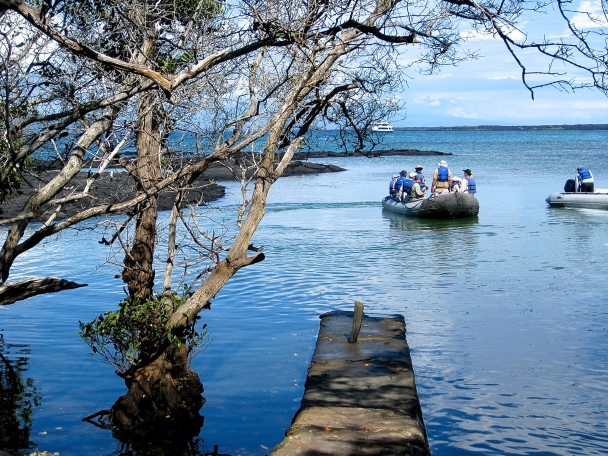
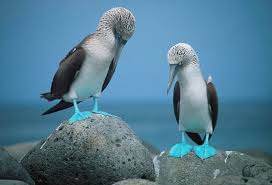
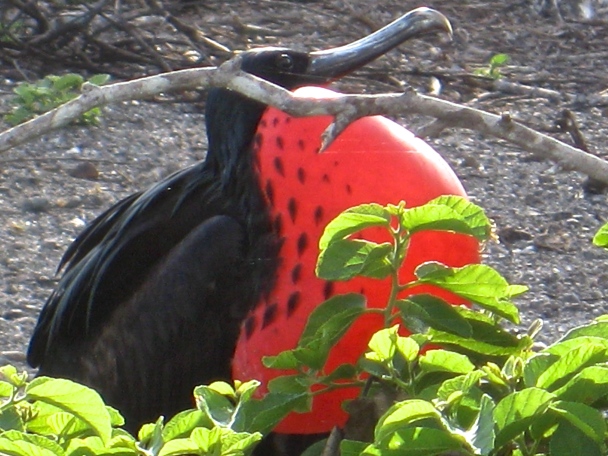
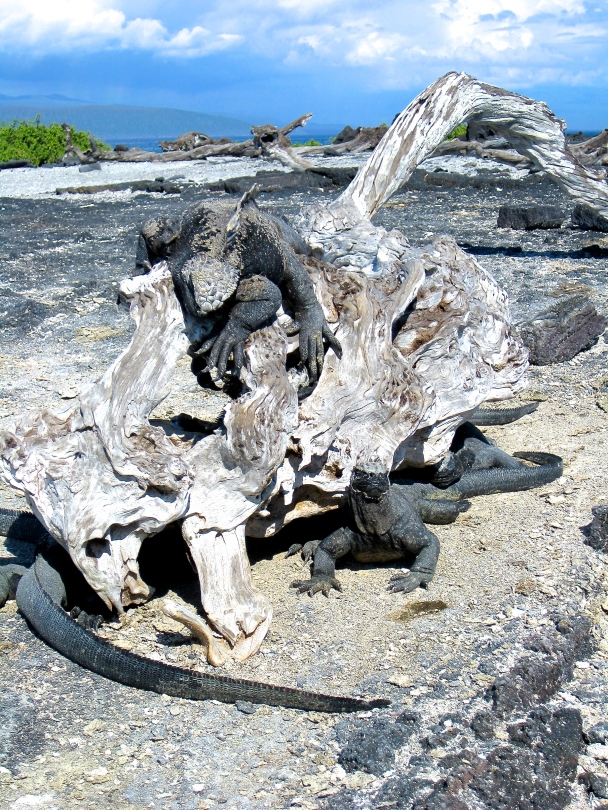

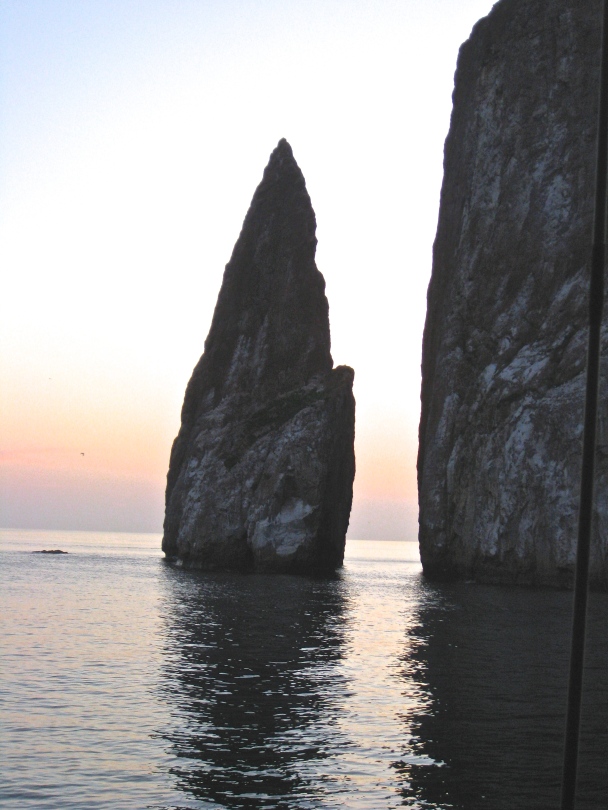




Fantastic pictures. Those iguanas are something else – the photo of the swimmer looks surreal. If I’d been Darwin and I’d seen things like that I probably would have rethought everything I’d ever assumed about the creation of the world, too.
It’s surprising how much censure and ostracism he risked by finally daring to sort of gradually eke out his theories. I guess that even then religious zealots weren’t fond of science! Some things never seem to change……..
Like you, I cannot resist a UNESCO World Heritage Site! Next week it is Zaragoza and the Mudejar Architecture of Aragon!
Wow – that sounds great! Tiger’s Nest in Bhutan should be considered for a UNESCO site in my (recent) opinion but they may not yet be at a point to make all of the happen. I did a Rhine cruise in Frankfurt yesterday and the guide said the whole area we were in is a UNESCO World Heritage Site but I need to look that up and verify it myself. Any chance you’ll be at TBEX in Athens this year?
Sounds like fun so might think about it!
Great pictures! When people ask us our favorite place that we have traveled we always answer the Galapagos. Definitely a bucket list trip.
We loved it too. Now we’re mulling (translation: trying to figure out how to do it on the cheap) a boat trip around the Fiji islands where you go to a couple snorkel reefs a day and live onboard.
Isn’t it amazing that “dragons” live on these islands?